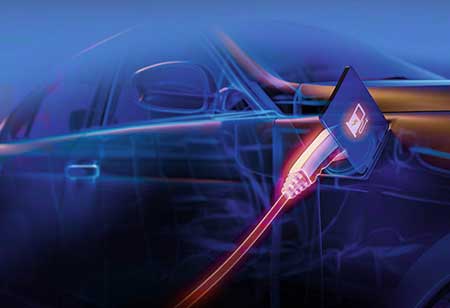THANK YOU FOR SUBSCRIBING
THANK YOU FOR SUBSCRIBING
Be first to read the latest tech news, Industry Leader's Insights, and CIO interviews of medium and large enterprises exclusively from Auto Tech Outlook

By
Auto Tech Outlook | Friday, October 18, 2024
Stay ahead of the industry with exclusive feature stories on the top companies, expert insights and the latest news delivered straight to your inbox. Subscribe today.
Advanced sealant technologies enhance vehicle durability by preventing moisture ingress and corrosion while reducing maintenance costs. They also ensure longevity and optimal performance through proper application and regular maintenance.
FREMONT CA: The future of vehicle durability is poised to undergo a significant transformation by adopting advanced sealant solutions. Innovations in sealant technology are at the forefront of this evolution, offering enhanced protection against moisture, corrosion, and temperature fluctuations. These technologies ensure vehicle durability by preventing the ingress of moisture, dust, and other environmental pollutants. Acting as barriers, these materials safeguard critical components and maintain structural integrity over time. The use of high-quality sealants contributes directly to the longevity of vehicle components, which enhances overall performance.
Effective sealants preserve initial vehicle integrity and minimise the risk of corrosion and rust. By creating a protective layer, they inhibit chemical reactions that can lead to degradation. Polyurethane and silicone sealants, commonly used, provide strong protection against harsh weather conditions and mechanical wear.
Sealant technologies significantly reduce maintenance costs. Properly applied sealants decrease the frequency of repairs associated with leaks and structural failures, leading to more reliable vehicle performance. Advanced sealant technologies can also significantly enhance a vehicle's lifecycle, ultimately benefiting consumers.
Reliance on innovative sealant technologies marks a strategic approach to enhancing longevity in the vehicle durability landscape. Their ability to withstand various stresses while maintaining functionality underscores the critical nature of these materials in vehicle design and maintenance.
Sealants' testing and evaluation are integral to ensuring their effectiveness for vehicle durability. This process involves a series of standardised assessments to measure various performance characteristics, such as adhesion, flexibility, and resistance to environmental factors. Adhesion tests evaluate the bond strength between the sealant and substrates, while weathering tests assess resistance against ultraviolet (UV) exposure and temperature fluctuations. Fluid resistance tests determine the sealant's ability to withstand various automotive fluids.
These evaluations help manufacturers select appropriate sealants suited for specific applications within vehicles. Insights gathered from testing inform product formulations and guide advancements in sealant technologies for durability. Rigorous evaluation protocols ultimately contribute to improved vehicle integrity and longevity.
Sealants for vehicle applications are primarily applied using standardised methods to ensure optimal adhesion and effectiveness. The application techniques vary depending on the specific sealant type and the vehicle’s intended construction or repair purpose. Standard procedures include caulking guns for precision, brush or roller application for even distribution, spraying for quick coverage over large areas, and troweling for thicker sealants.
The chosen method can significantly influence the sealant's performance characteristics. Proper surface preparation, including cleaning and priming, is critical to enhance adhesion and durability. Each technique should be tailored to the treated vehicle area, whether seams, joints, or larger surfaces, maximising the sealant’s effectiveness in achieving durability.
Maintaining sealants is pivotal for ensuring lasting durability in vehicle applications. Regular inspections help identify signs of deterioration, such as cracks or peeling. By proactively addressing these issues, vehicle owners can significantly extend the lifespan of sealants. Several maintenance practices enhance sealant longevity, including cleaning surfaces where sealants are applied to prevent contaminants from degrading the bond. Additionally, applying protective coatings can shield sealants from environmental stressors, thus supporting their durability.
Environmental factors like extreme temperatures, UV exposure, and moisture can accelerate degradation. Understanding these factors allows vehicle owners to select the appropriate sealant technologies for specific climate conditions and usage scenarios. By implementing recommended maintenance practices, vehicle owners can maximise their sealant investments. Regular assessments and environmental considerations ensure that sealant technologies for durability function effectively, preserving the vehicle's integrity over time.
Maintaining sealant technologies for durability requires attention to detail and regular upkeep. Routine inspections help identify early signs of wear or degradation, particularly in areas prone to UV exposure and moisture intrusion, as these factors significantly affect sealant integrity. Cleaning sealant surfaces is vital in prolonging their lifespan, so gentle, non-abrasive cleaners should be used to avoid compromising the sealant bond. Removing contaminants, such as dirt, grime, or road salt, helps prevent weakening adhesion over time.
In some instances, reapplication may be necessary to maintain optimal performance. Following manufacturer guidelines for application frequency and ensuring compatibility with existing sealants is crucial. Regular updates enhance vehicle durability and preserve aesthetic appeal. Monitoring environmental factors, such as temperature fluctuations and exposure to chemicals, can mitigate potential damage. By adhering to established maintenance practices, vehicle owners can ensure the longevity of sealant technologies, ultimately enhancing overall vehicle performance.
Sealant technologies are evolving with the development of smart sealants that incorporate sensors. These sealants enable real-time maintenance and enhance vehicle longevity while reducing maintenance expenses. The growing demand for eco-friendly solutions is driving the adoption of biodegradable sealants. Additionally, advancements in nanotechnology are improving adhesion and enhancing resistance to environmental factors. As the automotive industry transitions to electric vehicles, the need for high-performance sealants becomes increasingly critical to ensure durability under extreme conditions.
 Copyright © 2025 AutoTech Outlook. All Rights Reserved | Privacy Policy | Subscribe | Sitemap | About us | Feedback Policy | Editorial Policy
Copyright © 2025 AutoTech Outlook. All Rights Reserved | Privacy Policy | Subscribe | Sitemap | About us | Feedback Policy | Editorial Policy 



